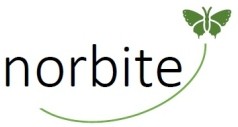Interview with Nathalie Berenzina, Norbite founder
Hi Nathalie, tell us how and when your interest in edible insects began
Hi Lorenzo, after my PhD I started to work in the industrial biotechnology field, mainly focused on the production of bioplastics. After few years within the field, I got the conviction that we were using microorganisms in some applications, such as conversion of lignocellulosic biomass, not because they were efficient, but because they were easy to handle, and for instance insects would be more efficient. This made me move towards the insect industry in 2014.
Which species of insects are you working with?
At Norbite we are working with the greater wax moth, Galleria mellonella.
You started farming insects, that’s not a real novelty, but you had a different idea of substrates. Can you better explain this difference?
Yes, as a chemist I am concerned by the availability of raw materials and the capacity of transformation of the selected raw material, therefore the extraordinary capacity of G. mellonella to transform common plastics rose my interest. Plastic industry generates over 300 Mt of waste per year, considering this waste as raw material opens considerable perspectives. In addition, I could put together my experience and network gained within (bio)plastic industry and knowledge and understanding of the emerging insect industry.
Where did you get the idea to feed insects with plastic?
It is actually a remarkably interesting story. There is a natural product, beeswax, which chemical structure is very similar to the structure of common plastics, and as there is no waste in nature, there is an organism, for instance an insect, the greater wax moth, that is able to digest beeswax, and also common plastics. But the discovery of this ability of G. mellonella was not made by such a rational consideration, on the contrary, as many great scientific discoveries it was due to a chance: the scientists who were transporting larvae of G. mellonella in a plastic bag, noticed that after few hours the insects were spreading in the lab through the holes they have made in the plastic bag; they then have investigated the phenomenon a little further and have been joined by other scientists who got more insights in the mechanism of the digestion process. At Norbite, we have elaborated a technology that enables the insects to perform at industrial scale.
Many could think that a plastic-eating insect will be no more suitable for human or animal consumption. Are they right?
I understand the concerns. However, these larvae usually consume beeswax and we do not have any specific issues with this substrate, and the plastics are remarkably similar products. Also, to feed the insects with synthetic products has a major advantage – the chemical structure of the substrates is very well defined, actually it is safer than feeding with some agricultural by-products that are mixes of several natural products with fertilizers, pesticides residues and other soil pollutants. Also, to propose any new substance for human consumption in Europe we need to pass through the Novel Food application process. This process consists of a very thorough analysis of potential toxicological and allergenicity aspects of the products proposed for human consumption, therefore this is the best protection of the consumers.
What products are you marketing at the moment (or in the near future, if you aren’t yet)?
We are starting with proteins, lipids and frass – dejections of the insects, to be used as biofertilizers.
Are the tiny plastic-eating creatures a way to get rid from plastic waste?
At least they are a part of the solution. Our aim is to be complementary to the already existing plastic recycling systems.
What are your development plans for the next 3 years?
Currently we have characterized our products and validated our processes at laboratory scale, for the next 2 years we are planning the co-development of our final products with the early adopters and the pilot scale validation of our processes; to get further towards a demonstration unit, and the industrial facility foreseen in 2027.






